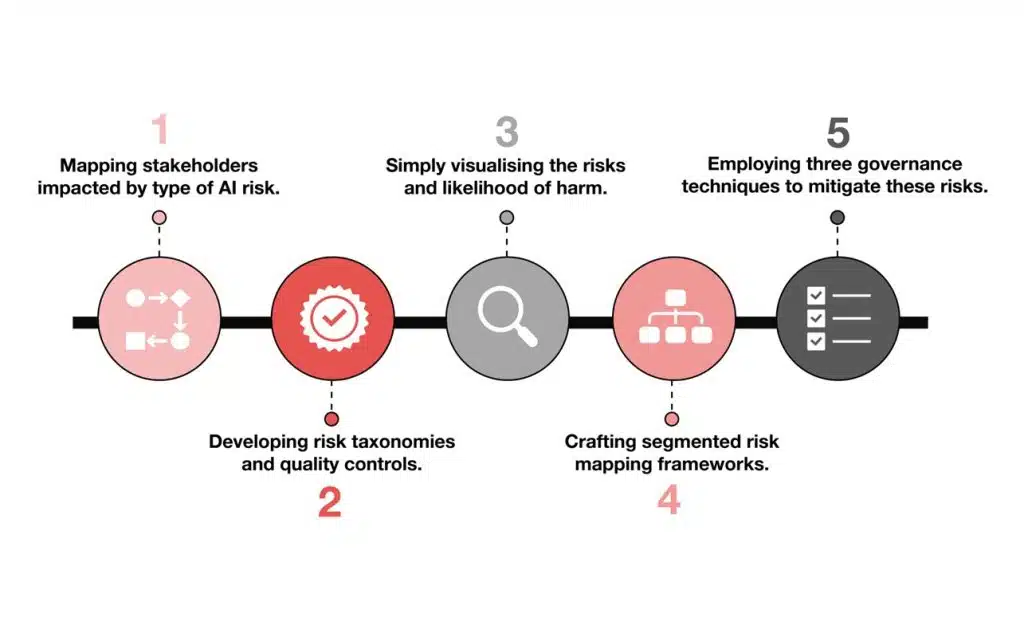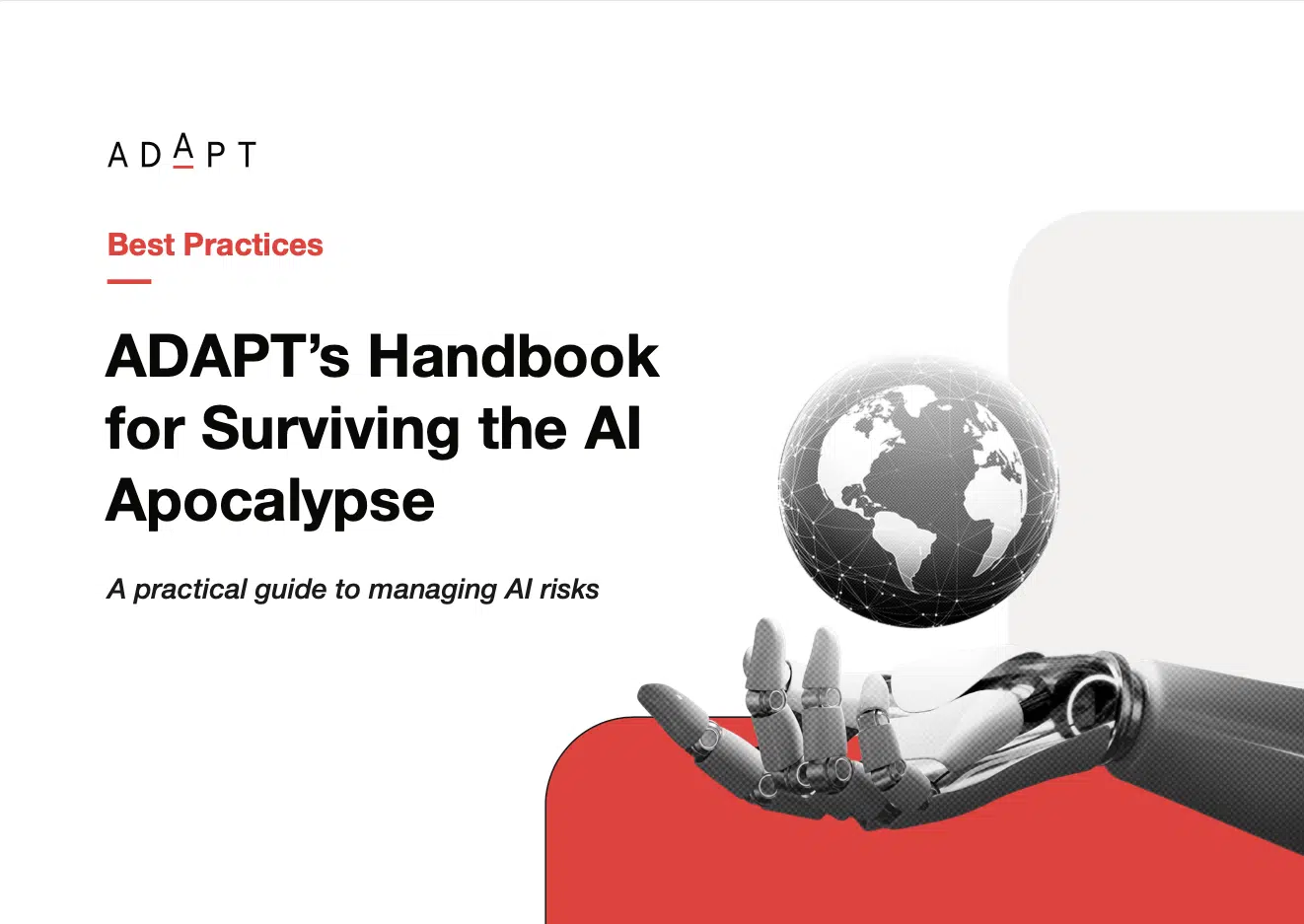A practical guide to managing AI risks
Executive Summary
There is growing academic material on mapping AI risks in an organisation. Batarseh and Freeman (2022)1 is often seen as the gold standard for ethical AI guidelines and risk management. However, other examples (Mudgal 2020)2, involve highly practical approaches to AI risk classification. Australia’s voluntary AI Ethics Principles (published 2020) offers a local context for readers of this report.
Many business and academic methodologies used to map AI risks share common themes. Informed by that research, ADAPT’s best practices are designed to help executives such as the Data Leader, Risk Leader and CISO manage the risks of AI by:
- Mapping stakeholders impacted by type of AI risk.
- Developing risk taxonomies and quality controls.
- Simply visualising the risks and likelihood of harm.
- Crafting segmented risk mapping frameworks.
- Employing three governance techniques to mitigate these risks.
This report is part of a set within the following research context. An ADAPT Market Trends report offers business recommendations for managing these risks. An ADAPT Market Trends describes the strategies organisations can deploy to unlock the exponential value of Generative AI. An ADAPT Market Trends report explores the alignments needed across corporate, people and data strategies to realise this value. And an ADAPT Primer addresses foundational matters.





